In the world of precise mesure de la distance, laser technology has become a cornerstone for applications ranging from industrial automation and robotics to arpentage et construction. But not all distance laser sensors are created equal—one critical factor often overlooked is laser visibility. Should you choose a visible laser capteur de distance, or does an invisible beam better serve your purpose?
In this article, we’ll explore the differences between visible and invisible laser beams, their impact on measurement performance, and help you decide which type fits your application best.
What Is a Visible Laser Distance Sensor?
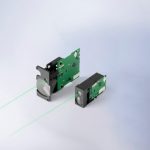
A visible capteur de distance laser emits a laser beam that falls within the visible light spectrum—typically between 400nm and 700nm. The Meskernel LDJ100 distance sensor, for example, uses a green laser (510–550nm), making the laser spot clearly visible to the human eye, even in outdoor conditions.
Principaux avantages :
- ✅ Easy target alignment—ideal for manual setup
- ✅ Real-time visual feedback—operators peut see exactly where the laser hits
- ✅ Safer aiming process in dynamic environments
The LDJ100-755 is a compact, high-performance laser distance module featuring:
- Measurement range: Up to 200m (reflectivity 1.0)
- Précision: ±3 mm
- Classe laser: Classe II, eye-safe with power <1mW
- Interface: UART, RS232/485 (external level shift module required)
- Working modes: Low-speed, high-speed, and automatic
🔗 Learn more about LDJ100 visible laser distance sensor at meskernel.net
What Are Invisible Laser Sensors?
Invisible capteurs laser use near-infrared wavelengths typically between 780nm and 1550nm, which lie outside the visible spectrum. This makes the laser beam completely invisible to the naked eye.
Benefits:
✅ Lower visual interference in safety-critical environments
✅ Greater eye safety in Class I modules with longer wavelengths
✅ Less disruption in consumer electronics and autonomous navigation
However, invisible beams are harder to align manually since you cannot see the beam path—making them less suitable for handheld or human-guided measurements.
Visible vs. Invisible: A Side-by-Side Comparison
| Fonctionnalité | Visible Laser (LDJ100-755) | Invisible Laser |
|---|
| Longueur d'onde | 510–550nm (Green) | 780–1550nm (Infrared) |
| Visibility | Visible to human eye | Invisible |
| Ease of Alignment | Excellent | Difficult without tools |
| Eye Safety Class | Class II (<1mW) | Class I or II |
| Application Suitability | Handheld, outdoor, visible setup | Enclosed systems, robotics |
| Alignment Speed | Fast and intuitive | Requires automation or camera |
| Précision de la mesure | ±3 mm | Varies (depends on model) |
| Use Case Example | Construction site surveying | Autonomous vehicle navigation |
When to Choose a Visible Laser Distance Sensor
A visible laser beam is highly advantageous when:
Operators need to visually confirm the target
You’re using the sensor manually or in semi-automated systems
Working outdoors or in bright environments where beam visibility helps alignment
You prioritize quick field deployment and simplified calibration
Visible laser modules are especially favored in:
Construction surveying
Handheld laser rangefinders
Forestry and land mapping
Smart measurement tools
✅ The LDJ100 green laser is particularly effective outdoors, thanks to the human eye’s sensitivity to green light—making it a standout among visible Détecteurs de distance à laser.
Meskernel LDJ100: An Ideal Visible Laser Distance Sensor
If your application benefits from high visibility and high precision, the Meskernel LDJ100 offers the perfect balance between performance and practicality:
- High visibility green beam for easy targeting
- ±3mm accuracy with measurement resolution down to 1mm
- Measurement range up to 200 meters (based on reflectivity)
- Supports continuous, single, low-speed, and high-speed modes
- Flexible interfaces: UART, RS232/RS485 for seamless system integration
And with its compact 62.9×40×18 mm form factor and light 14 g weight, it’s perfect for embedded devices and field tools.
🔍 Visit product page to view detailed specs and request a quote
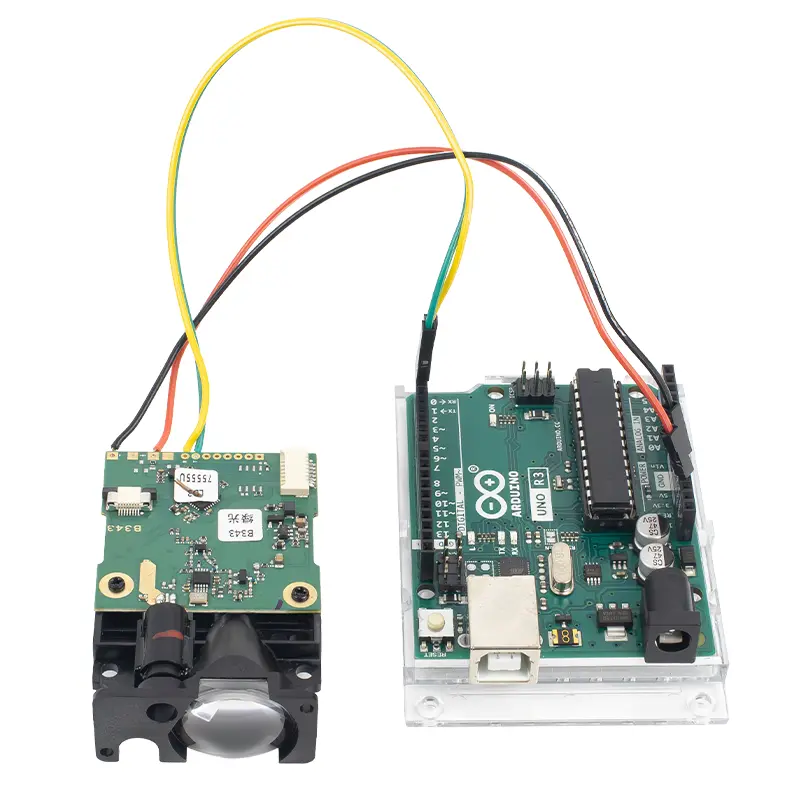
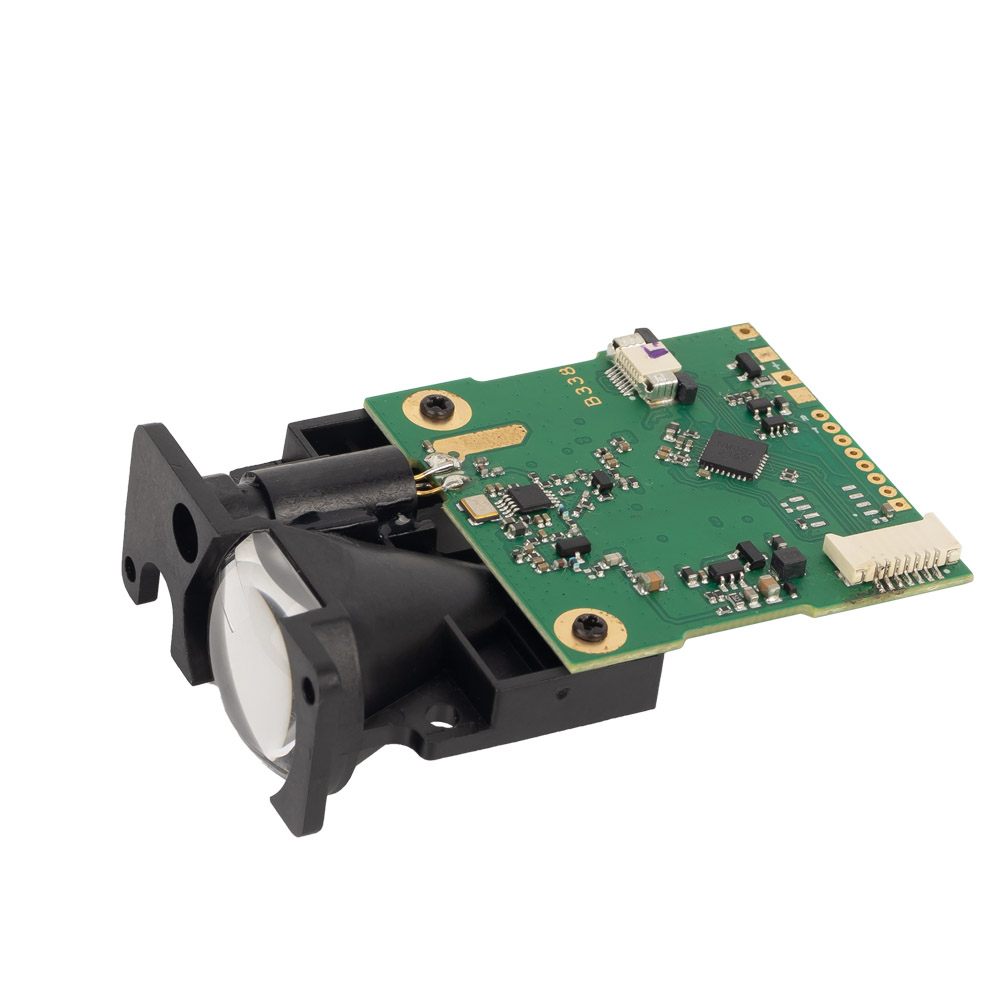
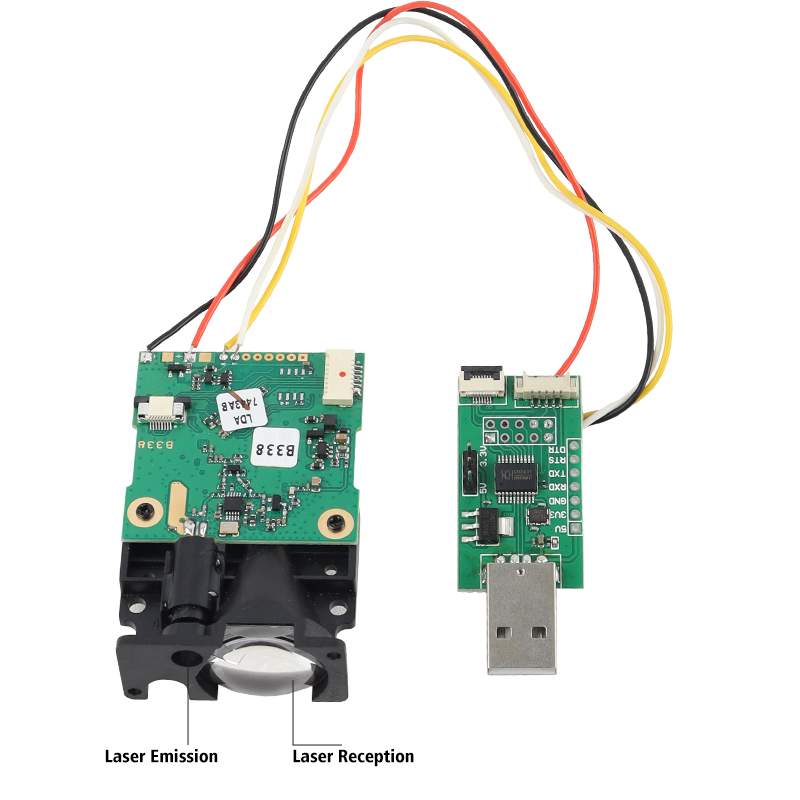
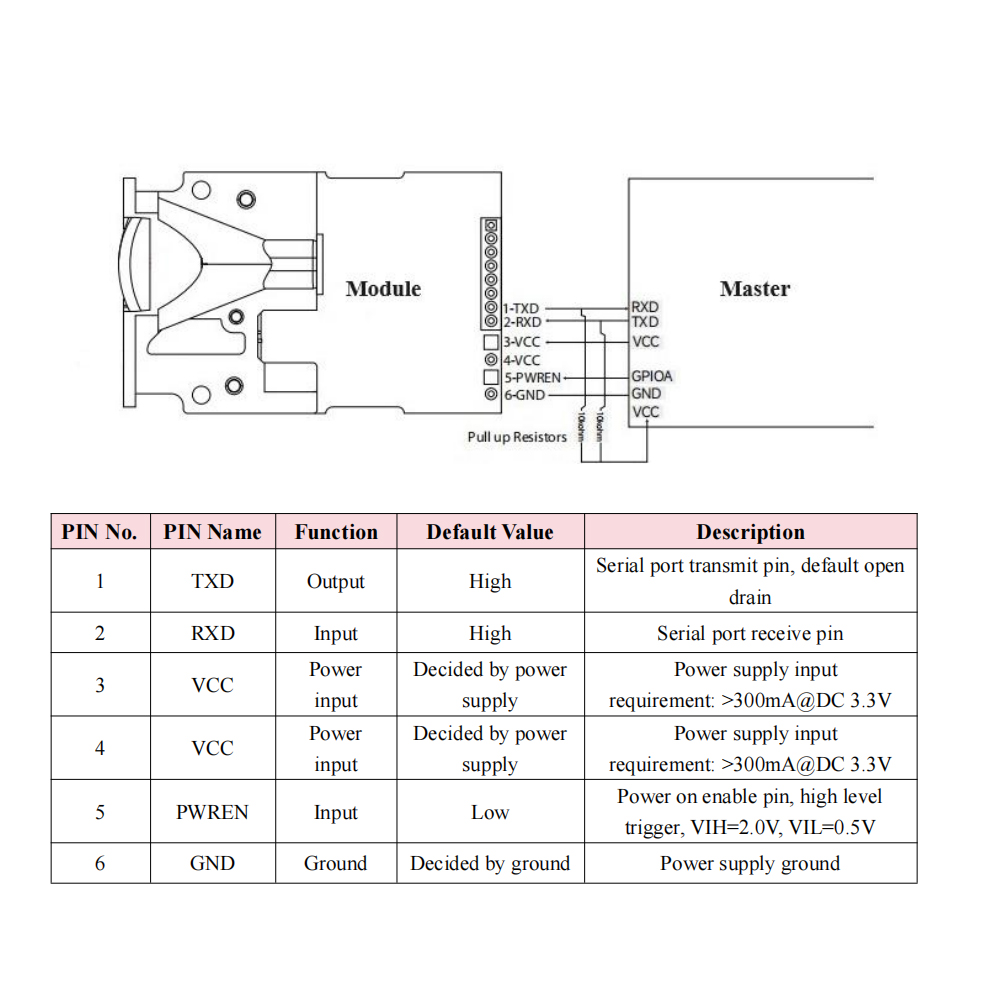
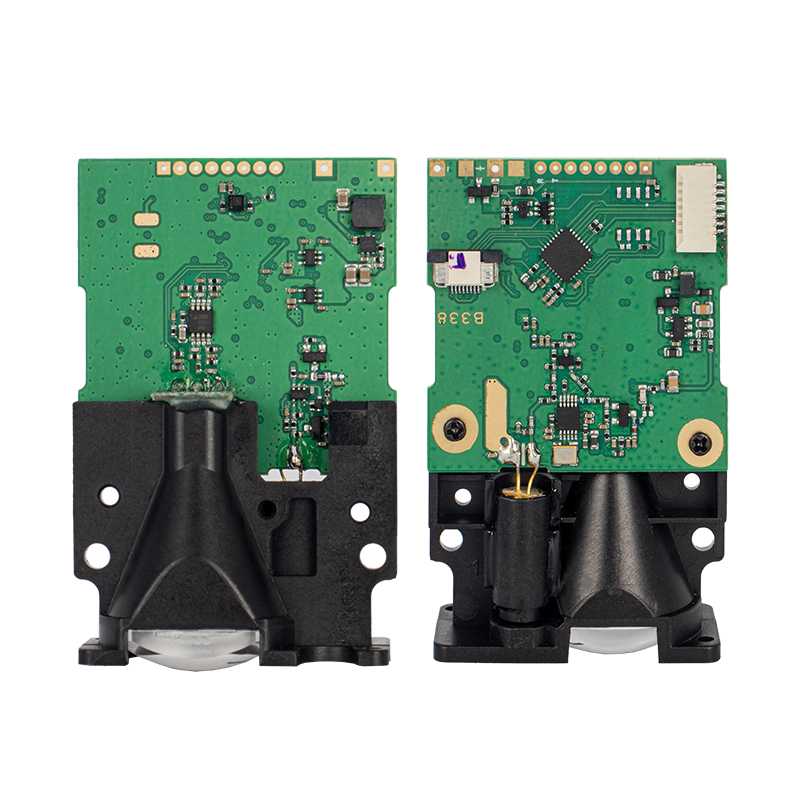
How Laser Wavelength Affects Performance
Laser wavelength directly influences:
- Visibility: Only wavelengths from 400–700nm are visible
- Eye safety: Longer wavelengths tend to be safer but invisible
- Atmospheric absorption: Infrared may be more affected by humidity or fog
- Material reflectivity: Different surfaces reflect different wavelengths better
The LDJ100 uses 520nm green light, offering optimal visibility and strong reflectivity across common industrial materials, as demonstrated by its reflectivity reference table.
Foire aux questions (FAQ)
-
What is the difference between a visible and invisible laser in distance sensors?
A: Visible lasers emit light in the 400–700nm spectrum (e.g., green at 520nm), which you can see. Invisible lasers, like those in the 850nm or 1550nm range, emit infrared light that is not visible to the naked eye.
-
Are visible laser distance sensors safe?
A: Yes. Class II visible lasers like the LDJ100 are eye-safe, with output power <1mW, meeting IEC 60825-1 safety standards.
-
When should I use a visible laser sensor?
A: Use it when visual alignment, fast manual operation, or human inspection is involved—especially in surveying, setup tools, or handheld rangefinders.
Final Thoughts: Choosing the Right Laser Type
Choosing between visible and invisible Détecteurs de distance à laser depends entirely on your use case.
- Need visual targeting or manual calibration? → Go with a visible laser distance sensor like LDJ100.
- Need invisible, automated, or embedded operation? → Consider an IR-based invisible laser sensor.
For most measurement tasks where humans are involved—visible lasers win in usability, alignment speed, and operational transparency.
Ready to upgrade your distance sensing system?
👉 Get in touch with Meskernel to discuss your project and request a quote
Related Resources